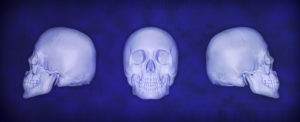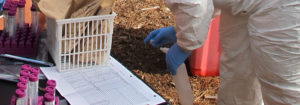Date February 2022 Author David Matthew | David Matthew LLC, Wichita, Kansas Overview This document outlines the process of designing engaging video vignettes to disseminate results from complex research projects in a manner that is easily digestible by practitioners. More…
Category: Crime Scene Investigation (page 2)
Evidence Collection and Analysis for Touch Deoxyribonucleic Acid in Groping and Sexual Assault Cases
Publication Journal of Forensic Nursing, April 2021 Authors Julie L. Valentine, Ph.D., RN, CNE, SANE-A, FAAN | Brigham Young University Paige Presler-Jur, M.S. | RTI International Heather Mills, MSFS | Utah Bureau of Forensic Services Suzanne Miles, B.S. | Utah…
Comparison of Portable and Benchtop GC–MS Coupled to Capillary Microextraction of Volatiles for the Extraction and Analysis of Ignitable Liquid Residues
← Additional Portable Instrumentation for On-Scene Fire Debris Analysis Resources Publication Forensic Chemistry, June 2020 Authors Michelle N. Torres | Florida International University Nicole B. Valdes | Florida International University José R. Almirall | Florida International University Abstract A novel…
Modifications to Capillary Microextraction in Volatiles for the Extraction of Ignitable Liquid Residues
← Additional Portable Instrumentation for On-Scene Fire Debris Analysis Resources Date March 2020 Overview This report summarizes the development and implementation of a novel sampling device (capillary microextraction of volatiles ) invented in the Almirall research group at Florida International…
2019 National Institute of Justice Forensic Science Research and Development Symposium
Date February 2019 Overview The 2019 National Institute of Justice (NIJ) Forensic Science Research and Development (R&D) Symposium is intended to promote collaboration and enhance knowledge transfer of NIJ-funded research. The NIJ Forensic Science R&D Program funds both basic or…
In-Brief Report Series: Beyond DNA – Sexual Assault Investigations
Date January 2019 Overview The National Institute of Justice (NIJ) is committed in their efforts to support scientific advancement, evidence-based practices, and community awareness of our Nation’s sexual assault response. As NIJ’s Director, Dr. David B. Muhlhausen, indicated, “our nation’s…
Success Story: Uncovering Key Details of Skeletal Remains through 3D-ID Software
National Institute of Justice and North Carolina State University Date January 2019 Overview When forensic anthropologists investigate unidentified remains, they look for important clues that can help identify the subject. For example, the size and shape of the skull can…
Conference Proceedings: 2016 International Forensic Radiology Research Summit
Date September 2017 Overview On May 10–11, 2016, the US Department of Justice (DOJ) National Institute of Justice (NIJ), the Netherlands Forensic Institute (NFI; Dutch Ministry of Security and Justice of the Netherlands), the International Society for Forensic Radiology and…
Success Story: Establishing a “Microbial Clock” to Improve Time of Death Prediction
National Institute of Justice and Multi-Institute Academic Team Date April 2018 Overview The postmortem interval (PMI) is the time that has elapsed since a person’s death. Determining the PMI at a crime scene may help to recreate the victim’s timeline…
Success Story: Maximizing the Use of Mitochondrial DNA in Identifying Remains and Aiding Missing Persons Casework
National Institute of Justice and the American Registry of Pathology Date April 2018 Overview Mitochondrial DNA (mtDNA) serves as an important tool in situations where traditional nuclear DNA analysis is unlikely to yield probative information. mtDNA sequencing has traditionally focused…









